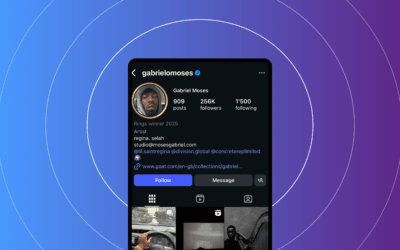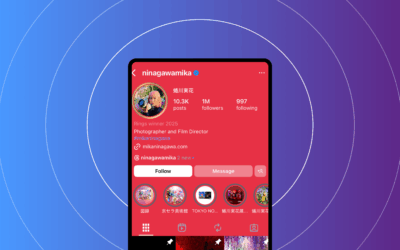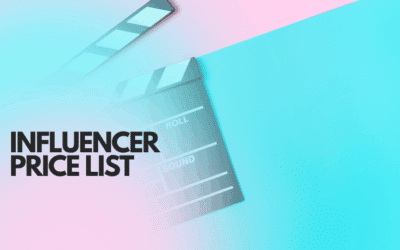What are AI influencers?
If you’re asking what AI influencers are and how to use them in 2025, you’re not alone. This guide defines the term, maps the types, and shows how to pilot AI-driven creators for ROI. You’ll learn practical steps, guardrails, and how to measure impact in real campaigns.
What you’ll get:
- Types of AI influencers and how they differ
- How they’re created and run (people, tools, workflows)
- Risks, ethics, and platform policies—and how to manage them
- A practical ROI framework and a pilot checklist for 2025
What Are AI Influencers? Definition, Scope, and Common Terms
AI influencers are digital personas—created or powered by artificial intelligence—that act like social creators. They engage audiences, promote products, or embody a brand. They can be fully virtual characters, real creators who use AI to scale content, or brand-owned avatars that stand in for a company.
Think of them as a spectrum, not a single thing:
- Fully synthetic/virtual influencers: entirely digital with AI-generated content and CGI.
- AI-assisted human influencers: real creators who use AI for visuals, copy, translation, or DM support.
- Brand-owned digital avatars: company-created characters used across marketing and support.
Related terms you might see include AI-generated influencers, virtual influencers, CGI influencers, synthetic creators, digital avatars, and digital twins.
Quick primer on tech making this possible:
- Generative models: GANs synthesize images/faces; diffusion models power photoreal images and video.
- 3D rendering and motion capture: engines create lifelike movement and real-time scenes.
- Voice and language: neural text-to-speech (TTS) and large language models (LLMs) for captions and replies.
Real-world archetypes exist already. Lil Miquela is a widely cited virtual creator with high-profile partnerships. Some brands have launched their own avatars for campaigns and content hosting.
Sources (accessed Sep 2025): GANs—Goodfellow et al., arXiv:1406.2661; Diffusion models—DDPM, arXiv:2006.11239
“Virtual personas don’t sleep—governance does. Build controls first, then scale.”
Source: Lil Miquela profile, The Verge (background on virtual influencer case)
How AI Influencers Are Created and Operated
There’s a repeatable workflow behind the magic. Here’s a marketing-friendly build-and-run model you can adopt.
- Strategy & Persona Design: Start with a tight brief—audience, tone, look, boundaries, and a response policy. Roles: brand lead, creative director, legal, and an AI partner. Time: 1–3 weeks.
- Visual Creation & Assets: Build 3D models or high-fidelity renders, rigging, animation. Check licenses for textures and third‑party elements. If making a digital twin, document likeness rights.
- Voice & Personality Scripting: Define voice, tone, Q&As, and crisis scripts. License neural TTS or train a custom voice with consent and usage limits. Pair with an LLM fine-tuned to the persona.
- Content Generation & Scheduling: Plan cadence across posts, Shorts/Reels, Stories, Lives. Mix CGI, diffusion stills, scripted videos, and avatar updates. Use an approvals queue for quality control.
- Moderation & Community Management: Decide on automated vs human moderation. Set escalation rules and a visible code of conduct for the account.
- Governance & Compliance Trail: Track approvals, asset licenses, model versions, and known limits. Store disclosures and platform tags in a style guide.
- Tools & Tech Stack: Real-time engines, MetaHuman-like workflow, diffusion/GAN pipelines, enterprise LLMs, and social schedulers.
Compliance and rights notes: document voice licensing and likeness rights; store safety rails and disallowed claims; keep pre-approved disclosures and hashtags ready per post.
Sources (accessed Sep 2025): MetaHuman Creator (Unreal), McKinsey on Generative AI productivity
What Are the 4 Types of Influencers? A Practical Taxonomy for Marketers
- Human influencers (baseline)
Definition: Traditional creators whose content is human-authored. Best for trust-heavy categories and expert-led narratives. Pros: high authenticity; Cons: less scalable.
- Fully AI-generated or virtual influencers
Definition: Synthetic personas, content from CGI plus AI. Best for storytelling at scale and 24/7 presence. Pros: controllable and consistent; Cons: potential trust gaps if disclosures aren’t clear.
- AI-assisted human influencers
Definition: Real creators using AI for ideation, editing, localization, or DM support. Best for multilingual campaigns and rapid ramp-ups. Pros: authenticity plus scale; Cons: requires transparent workflows.
- Brand-owned digital ambassadors/avatars
Definition: In-house characters used across channels. Best for explainers and evergreen support. Pros: full control; Cons: higher upfront cost and ongoing maintenance.
Source: Influencer Marketing Hub Benchmark Report 2024
Quick decision guide
- If objective = trust and peer advocacy → start with human influencers.
- If objective = precise messaging and 24/7 scalability → consider virtual or brand avatars.
- If objective = scale with a human face → AI-assisted human creators often hit the sweet spot.
Why Brands Invest in AI Influencers: Benefits, Use Cases, and Limits
AI false identities can change the math of creative scale. Benefits include:
- Scale and repeatability: One persona can post a lot without fatigue.
- Control and consistency: You set vocabulary and boundaries for safety.
- Cost efficiency at scale: Upfront costs can drop with localization and evergreen content.
- 24/7 availability and localization: Pre-approved replies in multiple languages and time zones.
- Rapid iteration: Test styles, hooks, and offers quickly.
Risks and how to mitigate them:
- Authenticity gaps: Be transparent and pair with real customer stories.
- Disclosure risk: Use clear labels and platform tags; follow endorsment guidelines.
- Platform policy risk: Review rules for synthetic media; update processes quarterly.
- Reputation risk: Use human-in-the-loop reviews and a crisis plan.
Common use cases:
- Product launches and demos
- Evergreen support tips
- Multilingual campaigns
- Community mascots for updates
Sources (accessed Sep 2025): FTC Endorsement Guides, MetaHuman page, McKinsey AI productivity reference
Measuring the Impact of AI Influencers: Key Metrics and Attribution
Treat AI influencer programs with the same rigor as performance and brand campaigns.
Core metrics:
- Awareness: Reach and impressions
- Engagement: Likes, shares, comments, saves
- Audience growth: Follower growth and retention
- Conversion: CTR, conversion rate, CPA; include assisted conversions
- Brand health: Aided awareness, consideration lift, sentiment
- Quality signals: Comment quality, repeat engagement, share of voice
Attribution approaches you can trust:
- Multi-touch attribution: identify the persona’s role across the journey
- Incrementality testing: holdout tests to measure lift
- Assisted conversions: show where the persona nudges prospects
Benchmarks:
Compare to category benchmarks and use prior human-influencer baselines for calibration.
For context and benchmarking: Influencer Marketing Benchmark Report 2024, Influencer KPIs guide
Practical Guidelines: How to Brief an AI Influencer Project and Choose Vendors
A tight brief speeds approvals and protects safety. Use a copy-paste starter below.
Sample brief outline (copy-paste):
- Project title and business objective
- Target audience and JTBD
- KPIs and reporting cadence
- Style/tone and persona profile
- Content types, platforms, posting cadence
- Creative guardrails and disallowed claims
- Measurement plan and disclosure notes
- Escalation path and crisis contacts
- Budget, timeline, and vendor roles
Vendor selection criteria:
- Demonstrated generative capabilities with live demos
- Clear licensing and IP terms for assets and code
- Transparency on training data and model provenance
- Safety tooling for moderation and content review
- Analytics integration with your stack
Governance & workflow:
- Form a steering group; hold weekly reviews.
- Store all approvals and model versions in a shared repo.
- Check platform policies at least quarterly.
Disclosure & compliance checklist:
- Clearly disclose sponsorships and material connections.
- Label synthetic content when it affects consumer understanding.
- Use platform-native tags as required.
Source: FTC Endorsement Guides; governance references (accessed Sep 2025)
Risks, Ethics, and Transparency: What Marketers Must Manage
AI influencers bring power and risk. Build protections from day one.
Key risks and mitigations:
- Misinformation or false claims: require fact-checking and legal review; maintain a claims library.
- Impersonation risk: never use likeness or voice without explicit consent and licensing.
- Bias and cultural insensitivity: test with diverse reviewers; localize with human QA.
- Privacy: track data provenance; don’t train on private or scraped data without permission.
- Reputation: pilot small, disclose openly, have a crisis playbook.
Transparency standards:
- Disclose sponsorships clearly and with platform tags.
- Consider explicit AI labels where helpful: “Content generated with AI assistance.”
- Publish a brief FAQ or “About this account” to explain the persona.
Source: FTC guidance and governance best practices; ethics frameworks (accessed Sep 2025)
Future Outlook: Where AI Influencers Are Headed in 2025 and Beyond
- Greater realism and faster creation—near-photoreal avatars and voice cloning.
- Multilingual, localized personas with better tone and cultural cues.
- Cross-platform identity verification and standardized disclosures.
- Hybrid models: humans plus avatars for balance of trust and scale.
- Rising regulatory scrutiny—clearer rules on disclosures and deepfakes.
Case Studies: Real-World Examples of AI Influencer Campaigns
Case 1 — Cultural breakthrough with a virtual influencer (success)
Objective: Reach Gen Z through a virtual persona in fashion/culture.
Archetype: Fully AI-generated/virtual influencer.
Approach: Photoreal CGI posts lifestyle content, collaborates with artists, and drops capsule campaigns.
Outcomes: Strong engagement and broad media coverage; partnerships extended into mainstream press.
Lessons learned:
- Novelty helps early adoption, but long-term value needs consistent storytelling.
- Transparency about the persona reduces confusion and backlash.
- Brand fit matters more than shock value.
Source: Lil Miquela profile (The Verge) — https://www.theverge.com/2018/4/11/17224358/lil-miquela-virtual-influencer-instagram
Case 2 — Brand-owned avatar for education (mixed outcome)
Objective: Explain complex features for a SaaS platform in multiple languages.
Archetype: Brand-owned digital ambassador.
Approach: Short tutorials and FAQs; content localized and aligned with sprints.
Outcomes: Higher completion for help content, but some topics benefited from human SMEs.
Lessons learned:
- Use avatar for repeatable tasks; bring in humans for depth.
- Clear handoffs between avatar posts and live sessions.
- Measure not only clicks but satisfaction and support deflection.
Case 3 — AI-assisted human creator for rapid launch (pilot)
Objective: Two-week product launch with daily short videos in three languages.
Archetype: AI-assisted human influencer.
Approach: AI for scripts, translations, and light visuals; pre-approved disclosures.
Outcomes: Daily cadence achieved; positive sentiment; extended partnership with Q&A sessions.
Lessons learned:
- AI speeds production; guardrails keep output on-brand.
- Humans QA idioms and humor for multilingual content.
- Maintain a glossary for accuracy across languages.
Implementation Checklist: How to Launch a Pilot AI Influencer Campaign
7-step quick-start
- Define objective and target audience (awareness, conversions, support).
- Choose an archetype and justify against the objective.
- Create a persona brief and safety boundaries.
- Select vendors/tools; confirm licensing and model provenance.
- Draft a disclosure and compliance plan; get legal sign-off.
- Launch a small pilot with time-boxed budget; use test vs. control where possible.
- Measure KPIs, review incrementality, then iterate or scale.
One-page brief template (copy-paste)
- Project name and objective
- Target audience(s)
- Primary KPIs and targets
- Persona/voice and visual guidelines
- Content formats and posting cadence
- Platforms and required tags/disclosures
- Measurement plan (tracking, attribution, incrementality)
- Risks and escalation
- Approvals and storage location
- Budget, timeline, owners
Frequently Asked Questions (FAQ)
Q: Who is the most famous AI influencer?
A: Lil Miquela is often cited as a famous example, known for fashion partnerships and media coverage. See The Verge profile for background.
Q: How much do AI influencers make?
A: Deals vary by audience, platform, and deliverables. Some virtual personas command mid-tier human rates; get current benchmarks from a trusted agency or vendor.
Q: Is Naina a robot or human?
A: Naina can refer to different personas. Check official bios or credible coverage to confirm whether it’s synthetic, human-assisted, or human. Use reliable sources when in doubt.
Q: What are the 4 types of influencers?
A: 1) Human influencers, 2) Fully AI-generated/virtual influencers, 3) AI-assisted human influencers, 4) Brand-owned digital ambassadors.
Q: Can AI influencers be trusted?
A: Trust comes from transparency, governance, and clear purpose. Disclose synthetic media and keep humans in the loop for high-stakes topics.
Q: Are AI influencers allowed on major social platforms?
A: Yes, with compliance to disclosures and policy rules. Always check current guidelines, such as TikTok’s Community Guidelines.
Q: How do AI influencers make content?
A: Visuals use diffusion or GANs; captions use LLMs; voices come from neural TTS. Humans typically review for accuracy and brand safety.
Q: What are the ethical considerations for brands using AI influencers?
A: Be transparent about sponsorships and synthetic media, obtain consent for likeness/voice, and avoid training on unlicensed data. Follow endorsement rules and keep an audit trail.
Q: What is Whitelisting? A Practical Guide for Content Teams
A: See internal governance resources for how to manage approved creators and content tags across campaigns.
Q: How to find influencers for your brand?
A: Start with clear objectives, then search credible creator networks and use outreach templates to find partners who fit your niche.
Source notes for FAQ: Influencer benchmarks, FTC guidance, and governance frameworks cited in body sections; external links listed in-context.
Conclusion
If you’re asking, What are AI influencers?, you’re already where many marketing leaders are: deciding when to test, partner, or keep to human creators. AI-generated influencers can scale content, localize quickly, and keep messaging consistent—but they need strong governance, disclosures, and measurement.
Three essentials to remember:
- Define the type you need (human, virtual, AI-assisted, or brand avatar) based on trust vs. scale.
- Build a governance spine—clear disclosures, approvals, and a crisis plan—before the first post.
- Measure incrementality, not just vanity metrics, and compare against human baselines.
Your next step: run a small pilot with one persona, one KPI, and explicit disclosure. Then scale based on measured lift.
Influencer Marketing Articles
Actionable tips to get more success with influencer marketing campaigns
Who is Gabriel Moses?
Discover Gabriel Moses, the London-born artist blending fashion, music, and heritage into striking visual narratives. From Dior to Johnnie Walker, see why he’s shaping culture.
Who is Mika Ninagawa?
Discover Mika Ninagawa, Tokyo’s visionary photographer and film director celebrated for her vivid art, bold storytelling, and win at Instagram Rings 2025.
Influencer Price List: What Brands Pay in 2025 & 2026
An influencer price list is the working set of fees and terms creators (or their agents) provide — the baseline for budgeting, negotiating, and forecasting influencer campaigns.






